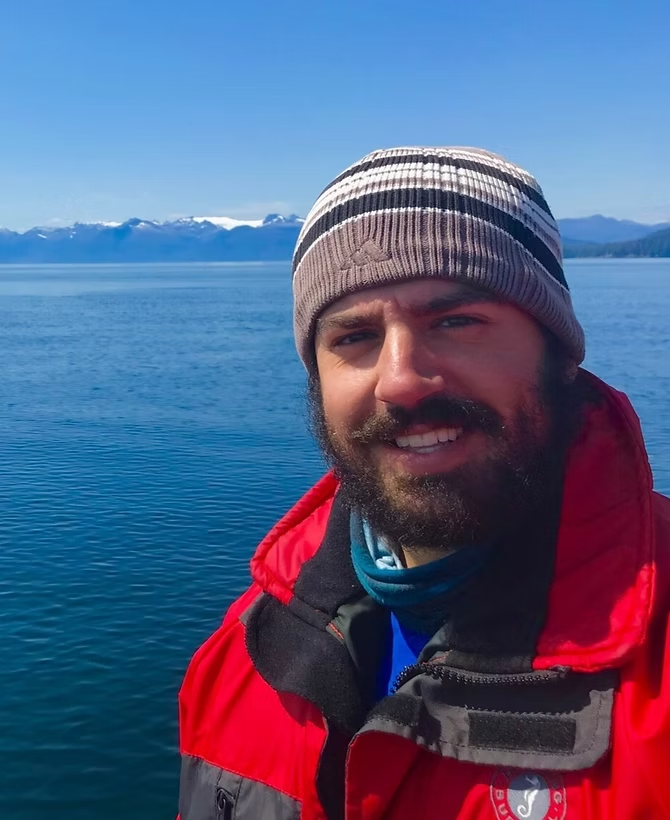From a parking lot to Kane`ohe Bay
- Will Gough

- Oct 10, 2022
- 4 min read
Updated: Oct 12, 2022
Post Doctoral Researcher

A research journey can start anywhere. Mine started in a parking lot. I was a pre-veterinary student walking back from my animal nutrition class along Tower Road on Cornell University’s picturesque campus when I noticed Dr. Betty McGuire walking along next to me down the aisle of cars. I had taken her vertebrate anatomy course during my freshman year and loved it, but I had no reason to think she would remember who I was – I sat quietly in the back throughout the semester. So, I was astonished when she turned to me and smiled. “Hi Will, how have you been?” I must have looked a bit taken aback, but quickly composed myself and we got to chatting about the research project that she was about to start. Urination behavior in domestic dogs. She offered me the opportunity to help out and be a part of the process - if I was interested. I had no idea what I was doing, but I said yes.

Twice a week for the next 2 years, Betty and I would head out to the local SPCA shelters and walk their dogs, one of us holding the leash while the other manned the clipboard and wrote down checkmarks every time the dog urinated or defecated. Which posture did they use? Which leg did they raise? Did they “ground-scratch” afterward? It wasn’t the most intricate research project, but it was eye-opening and infinitely rewarding. I pictured research to be an arduous process that involved lab coats and pipettes. I didn’t want to be a part of that. But now I was spending time out in the sun, bonding with animals and having long discussions with a woman whose kindness and patience have set an example for mentorship that I will scarcely hope to match.

The following semester, I found myself with the opportunity to help out with a second research project – this time focusing on the escape behavior of marine ducks with
Drs. Stacy Farina and Frank Fish. Having already gotten a taste for this new world of research, I jumped at the chance. But this project was different. Instead of walking dogs through summer fields or snowy silence, I was sitting at a computer in a quiet office and staring at grainy high-speed videos of ducks. I was unsure at first, but quickly grew to love the work. The movements were so fluid and graceful, the interplay of the ducks with their environment – the water and the air – was so satisfying. I learned a new word for this branch of research: biomechanics. As someone who never excelled in math, I inexplicably loved the physics of it all. Throughout the rest of my time at Cornell, I continued working on these studies, publishing both in what can only be described as a herculean feat of patience and hard work on the part of my mentors.

My next step was to move down to Pennsylvania and start a master’s degree with Dr. Frank Fish at West Chester University. The funding grant came through the Office of Naval Research and included multiple universities around the northeastern US. As a team, we would be studying the physics and structural properties of dolphin and tuna tails. For my part, I was focused on the internal anatomy of the odontocete tail fluke. Lots of CT scanning and gross dissection of collagen and blubber. It wasn’t exactly biomechanics, but it was adjacent and very fun. And I was lucky to be surrounded by a wonderful group of colleagues and friends – something I quickly realized would be a must in any future lab setting.
In the second year of my master’s, I started applying for PhD programs. By this point, I was fully on-board with research as my career choice. I had identified biomechanics as a field of interest, but I didn’t care what species I was working on. As a result, the species studied by the labs on my interest list ranged from whales to turtles to bird-eating spiders. I ultimately chose whales at Stanford University’s Hopkins Marine Station working with Dr. Jeremy Goldbogen.


Starting out in this new lab, I had the requisite imposter syndrome. After all, I was at Stanford University. Everyone around me was a world-class researcher and here were expectations that came with the name. I continually asked myself why I had been chosen. There were so many incredible candidates. But I pushed through the insecurity and honed a set of skills related to whale tagging (using non-invasive suction-cups) and accelerometry data processing. I applied these skills and my background in biomechanics to study the kinematics and energetics of swimming and feeding in large baleen whales. Five years later, I can safely say that those feelings of unease have been assuaged.
Coming to MMRP, I am excited to foster a sense of belonging and community for other students – from high school through the PhD. I will be combining my disparate skillsets to lead a “tag team” dedicated to using CATS (Customized Animal Tracking Solutions) tags to study the underwater movement and behavior of humpbacks, false killer whales, Hawaiian monk seals, and other marine mammal species.

For someone who’s research journey started in a parking lot, I never dreamed that I would be writing this blog post from a small island in the middle of Kane`ohe Bay, setting up lab space to mentor PhD students and finding my skillset useful in a broad range of scenarios. So, for anyone who thinks that research isn’t for them or believes that they aren’t smart enough to “make it”, I promise that isn’t true. The profession is big enough for all of us and will be infinitely bettered by your unique perspective and contribution.




Comments